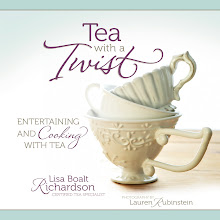 Well Miss Matty (Matilda Jenkyns) thought so in the film, Cranford, set in the mid 1800s in England. I think I may know why she and others from England may have thought that way...
Well Miss Matty (Matilda Jenkyns) thought so in the film, Cranford, set in the mid 1800s in England. I think I may know why she and others from England may have thought that way...A couple weekends ago, I rented and enjoyed watching Cranford. It is a movie by the BBC that was featured on PBS a while back. It is set in a small fictitious town in England called Cranford which is filled with mostly spinster ladies who love to gossip based on the novels by Elizabeth Gaskell. If you are a fan of period English films, this one will not disappoint.
"Tea would be ideal. Tea is really a genteel form of trade. It is purchased by people of every class, industry, and the most superior."
She reluctantly agrees to start selling tea but states,
"I will stock any kind of tea but the green kind-so fearfully bad for the digestive!"
Some might just pass that off as a bad encounter with green tea. However, there was a time that green tea was bad to drink in England. In my book, The World in Your Teacup, I have a chapter on England which goes into the tea history of the country. Here is an excerpt which explains one of the reasons why the English did not prefer green tea and eventually became a nation that mostly drinks black tea.
"Tea caught on among all the classes, but the taxes on tea were so high in that day that it was unaffordable to most. This led to smuggling.... To make matters worse, smugglers began compromising the purity of the tea by mixing it with leaves from other plants; thus, stretching their supply and increasing their profits.
Green tea was easier to adulterate than black tea. Often additives, which included poisonous chemicals, were mixed in with the tainted green teas. For example, after diluting the green tea with other plant leaves, smugglers used a metallic paint to make sure the tea was the correct shade of green. The public soon caught on to this trickery, and black tea became more popular than green. Some of those who complained about the effects tea was having on their nerves were probably being poisoned. "
I think it is fascinating to learn about different countries and their tea drinking practices. Learning why one country favors one type of tea over another is intriguing to me. If you want to learn more about tea drinking practices of other countries, my new book, The World in Your Teacup, is a great source.
So is green tea bad for you?
No, it is actually really good for you NOW, but the health benefits of tea is for another blog! What are some of your favorite green teas?
Happy Sipping - Dragon Well green tea in my cup today, Lisa
















